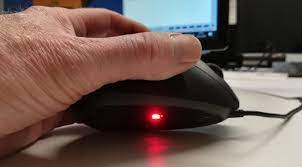Let’s face it, a wonky mouse is like a car with wonky wheels – frustrating and unproductive. Whether your cursor’s jittering like a caffeinated hummingbird or just refusing to budge, a busted sensor can wreak havoc on your digital life. Before you resign yourself to a new mouse’s clicky purgatory, let’s explore the world of mouse tester sensor repair!
Why Bother Fixing?
New mouse? Shiny! But hold on, eco-warrior. Fixing your current mouse is not just good for your wallet, it’s good for the planet. Less electronic waste, more happy Earth. Plus, the satisfaction of reviving your trusty rodent companion is priceless (almost).
Types of Mice, Types of Fixes
There are two main mouse camps: the old-school ball rollers and the modern laser/LED optical kind. Each requires a different approach:
Ball Mice: Remember those dusty relics? If the ball itself is the culprit, a good cleaning might do the trick. But if the sensor seems kaput, it’s probably time to say goodbye.
Optical Mice: These are where the real action happens. The fix depends on the specific issue:
Jittery Cursor: Cleanliness is key! Grab a cotton swab (lightly dampened with rubbing alcohol) and gently clean the sensor lens on the bottom. Debris like dust and hair can wreak havoc on tracking.
Cursor Lag: Try a different surface! Optical mice can struggle on reflective surfaces like glass. A good mousepad can work wonders.
No Response: Check the connection! Is the USB cable loose? For wireless mice, ensure batteries are fresh and there’s no interference from other devices.
Driver Blues: Outdated or corrupted drivers can cause issues. Head to your manufacturer’s website and download the latest drivers. A quick reinstall might be all it takes.
Deep Dive: The Sensor Fix
Feeling adventurous? For laser mice, sometimes a tiny lens adjustment can bring your sensor back to life. Disclaimer: This involves opening the mouse, which can void your warranty and requires delicate handling. Proceed with caution and at your own risk!
Gather your tools: Small screwdrivers, compressed air, cotton swabs, and extreme caution.
Crack it open: Consult your mouse’s manual or online guides for specific disassembly instructions. Remember, gentleness is key!
Locate the lens: It’s usually a small, transparent piece near the sensor.
Cleaning: Blow away any dust with compressed air, then gently clean the lens with a cotton swab dipped in rubbing alcohol.
Adjustment (optional): Some guides suggest carefully adjusting the lens position with a tiny screwdriver. Only attempt this if you’re comfortable and have steady hands. Double-check online resources for specific instructions.
Reassemble with care: Put everything back together, making sure all screws and wires are secure.
Before celebrating victory, plug your mouse back in and fire up a mouse tester sensor online. These handy tools let you check your cursor’s movement, accuracy, and click responsiveness. If all’s green, you’re golden!
Conclusion
By following these steps, you might just bring your beloved mouse back from the brink of click oblivion. Remember, prevention is key: regular cleaning, a good mousepad, and careful handling can extend your mouse’s lifespan. But hey, even if your fix fails, you’ve gained valuable tech knowledge and saved some precious e-waste. Now go forth and conquer that digital world, cursor woes be gone!
FAQs
My mouse is wireless. What else can I try?
Ensure the receiver is plugged into a USB port directly on your computer, not a hub or extender. Try replacing the batteries with fresh ones.
I tried everything, but my mouse is still dead. What now?
It might be time for a new one. Consider recycling your old mouse through e-waste programs.
I’m not comfortable opening my mouse. Are there any professional repair options?
Depending on the mouse and the issue, some computer repair shops might offer repair services. However, it might be more cost-effective to simply buy a new mouse.
Remember, the key to fixing a broken mouse sensor is patience, the right tools, and a willingness to try. With a little effort, you might just save yourself the cost and hassle of a new mouse, and keep your trusty companion clicking happily for years to come!
